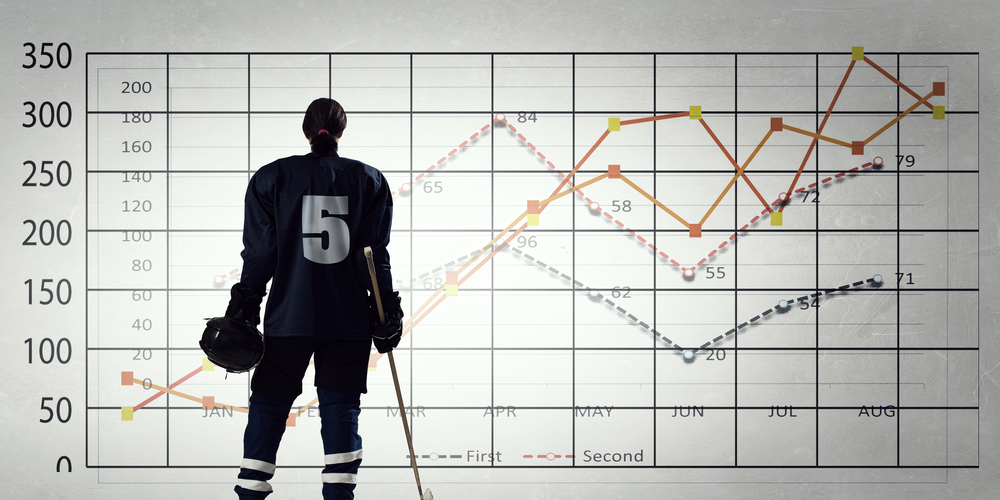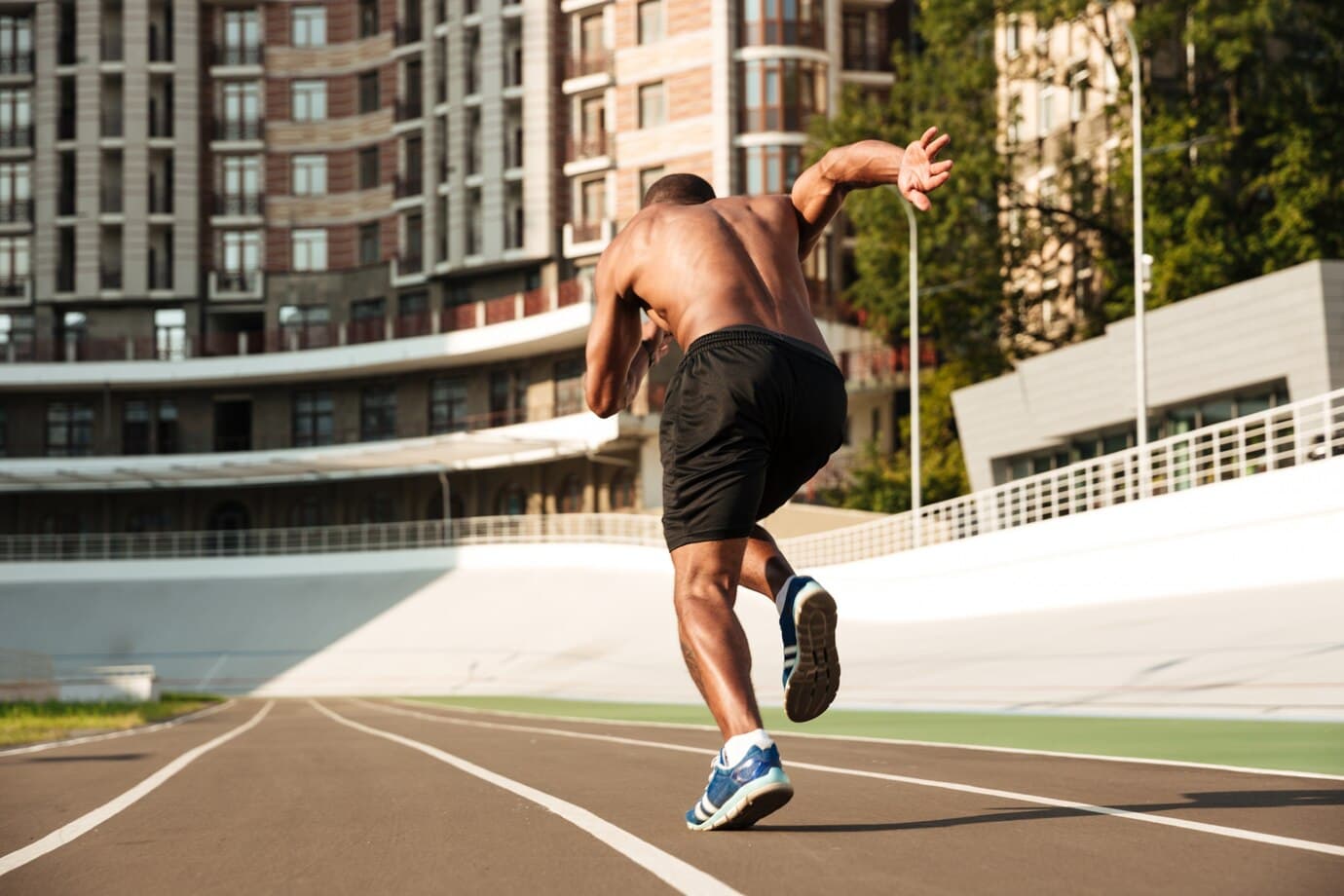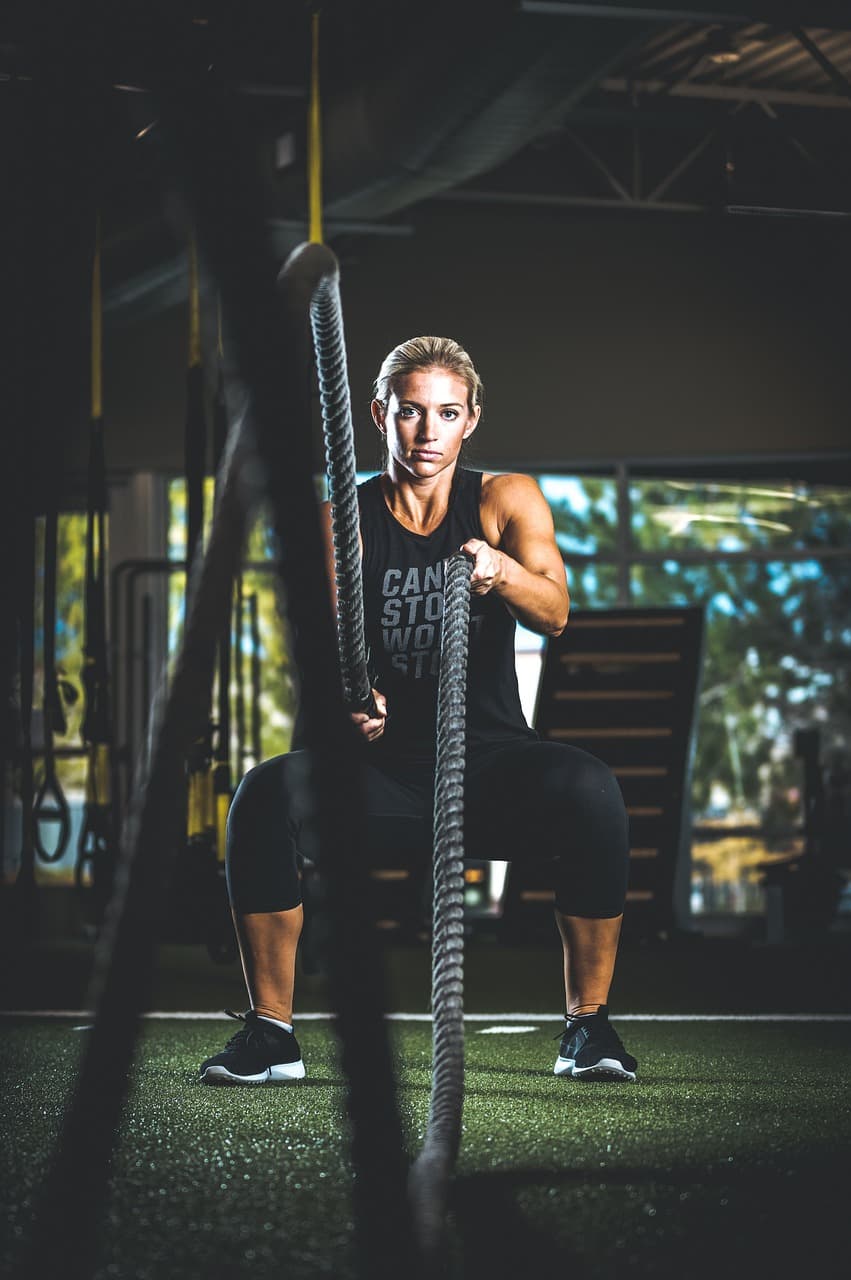The Future of Sports International Baccalaureate Internal Assessment is a crucial part of the International Baccalaureate curriculum. The IB program encourages students to explore a wide variety of academic areas, including sports science. Through a comprehensive internal assessment, they are given the opportunity to research and analyze the latest trends and developments in sports science, as well as their potential implications for athletes and coaches.
This guide aims to provide an overview of the Future of Sports IB Internal Assessment and explain why it is important to understand the current trends and advancements in sports science. We will discuss the use of artificial intelligence and machine learning, athletic performance analysis, environmental factors impacting performance, mental health in sport, and how to create a holistic performance strategy. By the end of this guide, you should have a better understanding of the research directions and emerging trends in sports science, as well as their implications for athletes and coaches.
If you’re struggling with your Sports IB Internal Assessment, it might be a smart move to consider using an IB IA Writing Service for help. These services offer expert guidance and support throughout the IA writing process, from selecting a research question to conducting data analysis and presenting findings. With the assistance of experienced professionals, you can improve the quality of your IA, ensuring that it meets the high standards expected by the IB. Moreover, using an IB IA writing service can save you time and reduce stress, allowing you to focus on other important aspects of your studies. By leveraging the knowledge and expertise of others, you can increase your chances of success in your Sports IB Internal Assessment. Your decision to buy IB Internal Assessment might be the smartest
Emerging Trends in Sports Science
Sports science is a constantly evolving field of study. As technology advances, and new research continues to develop, the knowledge base for sports science continues to grow. This creates exciting opportunities for athletes, coaches, institutions, and even entire countries to leverage the latest trends in sports science to improve performance and safety.
In recent years, we have seen an explosion of new techologies, including wearables, data-driven analytics, and virtual/augmented reality simulations, that are changing the way we train athletes and approach coaching. In addition, engineering-based approaches (such as robotics and biomechanics) and biometry-based analytics (utilizing artificial intelligence and machine learning) are now being used to gain insight into athletic performance.
The potential applications of these trends are limitless; from tracking individual player movements in real-time, to predicting injury risks, to optimizing peak performance. The possibilities are endless, and they represent a significant step forward in maximizing the effectiveness of training and competition.
The future of sports science is bright, and it is only getting brighter. As technology advances, and new research develops, our understanding of how to optimize performance and safety will only increase. It is an exciting time for sports science, and the possibilities for improving athletic performance are enormous.
The Use of Artificial Intelligence and Machine Learning in Sports
Artificial intelligence (AI) and machine learning (ML) are rapidly becoming important tools in the world of sports. By harnessing the power of AI and ML techniques, coaches and analysts can gain unprecedented insights into player performance. This helps them to better understand their athletes, improve coaching techniques, and identify areas for improvement.
AI and ML can be used to analyze multiple data sources, such as games footage or statistical data. This analysis can help to identify key performance indicators, such as shot accuracy, speed, and agility. AI and ML can also be used to track players in real time, helping to provide coaches with real-time insights into their athletes’ performance.
It can also be used to study team dynamics and player interactions. AI and ML can be used to detect patterns of communication, movement, and strategy among teams, allowing coaches to tailor their game plans for improved performance.
AI and ML can also be used to optimize preparation for upcoming games. Coaches can use AI and ML to analyze previous games and develop strategies for upcoming matches. This kind of technology can also enable teams to prepare specific drills for players to practice on to target weak areas identified by AI and ML analysis.
Finally, AI and ML can be used to measure the emotional state of players. This allows coaches to identify and intervene if a player is feeling too stressed or anxious before a game. AI and ML can also help coaches analyze a player’s behavior on the field, helping them to adjust their coaching approach as needed.
As AI and ML continue to evolve, they will become increasingly important tools in the world of sports. By leveraging the power of AI and ML, coaches and analysts can gain a better understanding of their players, leading to improved performance and greater success.
Athletic Performance Analysis
Athletes are constantly looking for ways to improve their performance. In the past, we used to rely solely on anecdotal evidence to measure and assess athletic performance. Now, however, new technologies allow us to analyze athletes’ performance in much greater detail. The field of sports science uses data-driven techniques to measure, analyze, and compare athlete performance.
One of the most common tools used to measure and analyze athlete performance is movement tracking systems. These systems use sensors and cameras to track the movement of athletes and measure things like speed, acceleration, and agility. The data collected can then be used to assess performance, detect weaknesses, and develop targeted drills and exercises.
Another popular technology used in sports science is accelerometers and gyroscopes. These tools measure the multi-dimensional motion of an athlete and collect data related to balance, coordination, and agility. With this data, it’s possible to gain insight into athletes’ strengths and weaknesses, as well as evaluate how different movements impact overall performance.
In addition to technological measures, biomechanical techniques are also used in sports science. This practice focuses on understanding the physical forces that drive movement and performance. Through careful observation and analysis of these forces, it’s possible to identify problems, assess performance, and create tailored training plans.
Athletic performance analysis is an important part of the sports science field. By using data-driven techniques, such as movement tracking, accelerometers and gyroscopes, and biomechanics, it’s possible to measure, analyze, and compare athlete performance. This information can be used to inform coaching decisions, improve performance, and generate tailored training plans to optimize results.
Environmental Factors that Affect Performance
The environment athletes compete in can have a significant effect on their ability to perform at their best. There are many environmental factors including temperature, altitude, and hydration, that can determine how well an athlete performs. Understanding these factors and how they affect performance can help athletes develop strategies for optimizing their performance.
Temperature
Temperature plays a vital role in how athletes perform. In hot weather, an athlete’s body will produce more sweat to cool down. This can lead to increased fluid loss that must be replaced to prevent dehydration and maintain energy levels. Cold weather can also cause muscle fatigue which can negatively impact performance. To combat this, athletes should wear the appropriate clothing and practise in similar conditions.
Altitude
Altitude can also have a significant impact on performance. At higher altitudes, there is less oxygen available which can cause breathing difficulties and reduce energy levels. To counteract this effect, athletes should gradually increase their exposure to higher altitudes during training to give their body time to adjust. They should also make sure they are well hydrated when competing at higher altitudes.
Hydration
Maintaining proper hydration levels is essential for peak performance. Dehydration can cause fatigue, muscle cramping, and decreased coordination. It is important for athletes to stay hydrated before and during exercise by drinking plenty of fluids and electrolytes. Athletes should also monitor their urine colour, as it is one of the best ways to tell if you are adequately hydrated.
Strategies for Optimizing Performance in Challenging Environments
- Train in similar conditions to those you will be competing in.
- Gradually acclimatize to higher altitudes.
- Drink plenty of fluids throughout the day and during exercise.
- Monitor your urine colour to ensure adequate hydration.
- Eat a balanced diet to ensure a steady supply of energy.
- Dress appropriately to withstand extreme temperature changes.
By understanding the environmental factors that influence performance and developing strategies to optimize performance, athletes can be better prepared for competition in any environment.
Mental Health in Sport
Mental health is an important factor to consider when looking at athletic performance. Studies have shown that there is a significant correlation between mental health and physical performance, with athletes having better results in their sport when their mental health is taken into account. In order to maximize athletic performance, athletes must possess both the physical skills and emotional resilience necessary to succeed.
Mental health is the emotional, psychological, and social wellbeing of an individual. It is affected by various factors such as genetics, environment, lifestyle choices, nutrition, and physical activity. Mental health can be improved through positive lifestyle choices, such as getting proper sleep, eating well, exercising regularly, and finding ways to manage stress. It is important to recognize that mental health can be fragile and can change over time.
In the sports world, mental health can often be overlooked in favor of physical performance. However, it is essential for athletes to assess and manage their mental wellbeing in order to reach their peak performance levels. One way to do this is by educating athletes about the importance of mental health and how it can affect their performances. This can include providing them with resources about mental health, talking about stress management techniques, and helping athletes understand how to identify signs of depression.
Moreover, coaches can play a key role in promoting mental health in sports by creating a positive environment which encourages athletes to openly discuss any mental health issues they might have. Coaches should also look out for any indicators of poor mental health and offer support to athletes who might need it. This can include helping athletes build confidence, fostering positive relationships, and providing access to mental health services.
Mental health is an important factor to consider when assessing athletic performance. By taking mental health seriously, athletes can achieve greater performance levels and develop healthier mindsets. Coaches and athletes can work together to promote mental wellness and ensure that athletes have the emotional tools they need to succeed.
Creating a Holistic Performance Strategy
When creating a holistic performance strategy for athletes, there are several important components to consider. It can be helpful to think of these components as pieces of a puzzle that need to fit together in order to give the athlete their best chance for success.
The first component to consider is physical health. This includes strength, flexibility and endurance training, as well as nutrition and rest. All of these components must be evaluated in order to achieve optimal performance.
The second component is mental health. Having a positive attitude and emotional control can be just as important as physical training. That’s why it’s important to include elements such as goal-setting, motivation, and stress management in your plan.
The third component is technical skills. Ensuring that your athletes have the correct techniques for their chosen sport is essential for them to be successful. That’s why coaches and trainers should create a comprehensive program of drills and exercises to help their athletes hone their skills.
Finally, the fourth component is tactical knowledge. Understanding game situations, strategies and opponent tendencies all contribute to an athlete’s overall performance. It’s important to create a plan that includes the analysis of game footage, both from opponents and yourself, so that you can improve your athletes’ understanding of the game.
When creating a holistic performance strategy for an athlete, it’s important to consider all four components: physical health, mental health, technical skills, and tactical knowledge. By taking the time to evaluate each of these components and putting together a comprehensive plan, you can help ensure that your athletes will have the best chance for success.
In conclusion, the Future of Sports IB Internal Assessment is worthy of serious consideration as it provides an important platform to explore the emerging trends in sports science. As technology continues to evolve and data-driven insights become more accessible, sports organizations, coaches, athletes, and researchers will have to consider the implications and navigate the opportunities that come with this new era of sports science.
The guide outlined the various aspects of sports science, including the use of artificial intelligence and machine learning, athletic performance analysis, environmental factors impacting performance, mental health in sport, and creating a holistic performance strategy. By understanding the current research and developments in the field, organizations and athletes have the opportunity to leverage data-driven insights and strategies to enhance the performance of players and teams.
As the Future of Sports IB Internal Assessment continues to unfold, the opportunities for improving performance, uncovering trends, and impacting outcomes will only expand. By being aware of the current advancements and considering the impact of emerging technologies, organizations are well positioned to maximize their potential and strive for success in the ever-evolving world of sport.
Citing Sources for Your Guide
When writing a guide, it is important to back up your research and findings with reliable sources. This will help readers trust the information you are providing, as well as give credit to the authors of the sources used. When citing sources, it is essential to adhere to the academic standards of the IB Internal Assessment guidelines.
To start, make sure that all sources used in the guide are properly credited and cited. Different subjects and fields of study may require different formatting styles, so be sure to double-check what’s preferred for your topic. Additionally, ensure that all sources are current and appropriate for the subject matter. Outdated sources may contain false or inaccurate information, so double-check the publishing date for each reference.
When citing sources, refer to the author’s name, work title, date of publication, and any other relevant information, such as the publisher and edition number. Websites should include the website domain and date last accessed. Additionally, all sources should be listed on a separate reference page at the end of the guide.
It is also important to make sure that you are not plagiarizing any sources. Plagiarism is taking someone else’s work without giving them credit and can have serious repercussions, including criminal prosecution. Any quotes, ideas, or facts taken directly from a source should be credited to the original author, either within the guide or on the reference page.
In conclusion, references and citations are important elements of writing a guide to the Future of Sports IB Internal Assessment. Adhering to the correct formatting and avoiding plagiarism will help ensure your guide is of the highest quality and contains accurate information.
Writing an article can be a daunting task, but with the right approach it can be quite straightforward. The first step is to bring together your research on the topic and organize it into an outline. This should include major points and key takeaways that will be included in the article. Once your outline is complete, you can start writing.
When writing, it’s important to maintain a consistent structure that is easy for readers to follow. Write in plain language and avoid using large, technical concepts or jargon. Divvy up topics into small, digestible chunks of text and use titles and subheadings to break up the main points.
Be sure to provide examples and references throughout the article to illustrate key concepts. Use visuals like graphs or images to enhance the reader’s understanding. These should always include captions or brief descriptions to help orient the reader.
Finally, it’s essential to proofread your article before publishing. Carefully review each section for accuracy, flow, and grammar errors. Make sure all your references are properly cited and that your article is free of any offensive language. Once you have made all the necessary corrections, you can finally publish your article!
When writing any piece of work, it is essential to thoroughly proofread the article before publishing it. Proofreading is the process of carefully reviewing and checking text for accuracy, flow, and grammar errors. It’s a vital step that should not be skipped as it ensures your work is of the highest quality and free from any mistakes.
Before you begin proofreading, it is important to take a break from writing and come back to it later with a fresh pair of eyes. Reading your text again when you’re more alert will help you to spot any potential mistakes or errors more easily. Additionally, it is helpful to read your text aloud, or to have someone else read it to you, as this helps to identify awkward or unclear sentences.
When it comes to proofreading your text, there are three main things to keep in mind: accuracy, flow, and grammar.
Accuracy:
Checking for accuracy involves ensuring that all facts and figures are accurate and up-to-date. Double-check all your sources and references and make sure that any citations are correct.
Flow:
The flow of your text should be easy to follow and understand. Be sure to check for any incorrect transitions between paragraphs and that the order of information makes sense. Additionally, ensure that your article follows a logical structure and that each section builds upon the previous one.
Grammar:
Grammar is extremely important when it comes to writing. Carefully review your text to make sure that all your verbs agree with the subject, that you’ve used the right punctuation and that any adjectives and adverbs are correctly placed. Additionally, check for any typos and spelling mistakes.
Proofreading is an essential part of the writing process. It can be time consuming, but it is well worth the effort as it ensures that your work is of the highest quality. Take your time, be thorough, and you’ll be able to proudly present your work to others.
Publish: Uploading the Article
Once you have written your guide and ensured it is error-free, you’ll want to upload it to a blog platform or other online publishing site so that people can read and benefit from your work. This can seem like a daunting task, but with a few simple steps, you can get your article ready to share with the world.
Step 1: Choose a Blog Platform
The first step when uploading your guide is to choose a blogging platform. Popular options include WordPress, Wix, and Squarespace. Each platform has its own set of features and benefits, so be sure to research the different options before settling on one. Also consider ease of use, cost, and the level of tech support available.
Step 2: Create an Account
Once you’ve decided on a blog platform, you’ll need to create an account. You will likely be prompted to provide some basic information such as name and email address. Depending on the platform you choose, you may need to enter payment details to activate certain features or subscribe to a plan.
Step 3: Upload Your Content
After signing up and logging in, you will be taken to the dashboard of your chosen platform. From there, you can begin adding content to your blog. Most platforms have tools to help you format your text, add images, and create links. Be sure to follow the guidelines for each platform when adding content to ensure it displays correctly.
Step 4: Sharing Your Content
Once you have written, formatted, and uploaded your article, you can then share it on social media and other online channels. Consider creating a dedicated URL for your article, which will make it easier for people to find it. Additionally, some platforms provide the ability to collect email addresses for readers who wish to be notified when you publish new content.
Conclusion
Uploading your article to a blog is surprisingly easy. With the right platform, you can quickly and easily get your content out into the world. So, make sure to familiarize yourself with the different blogging platforms, create an account, upload your content, and start sharing your article with the world.



